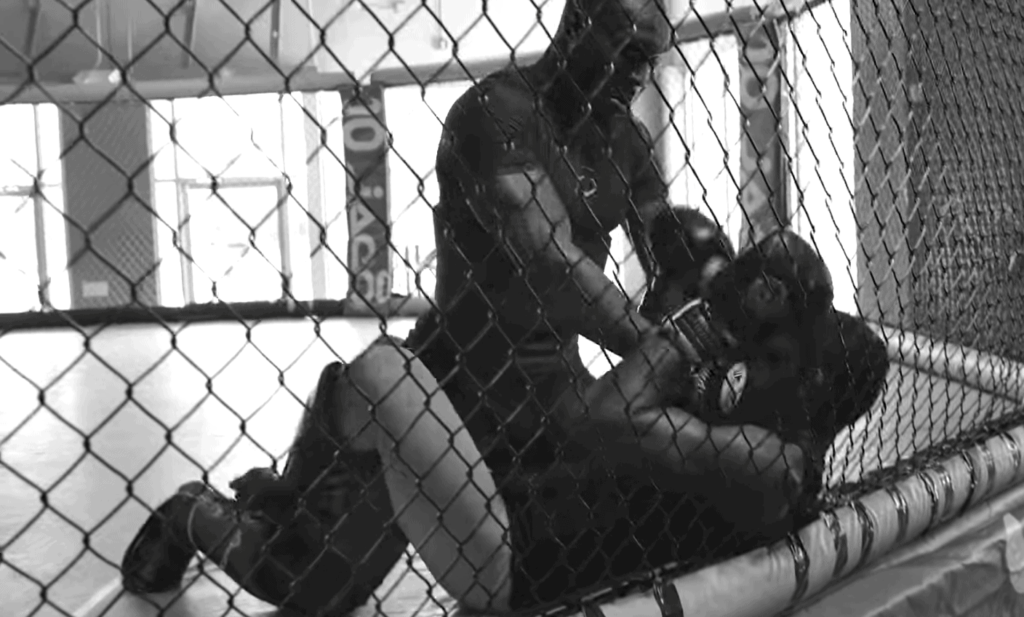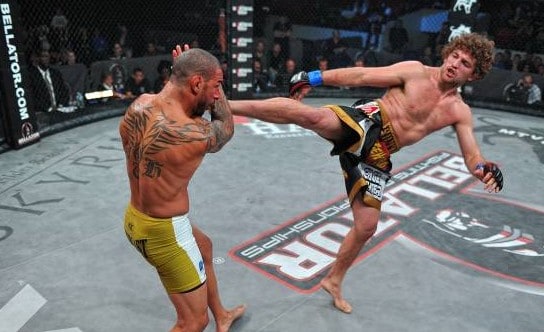
Mixed martial arts is one of the most unique professional sports from a training perspective. The sport is literally a collection of sports put together under a specific rule set.
The progression that MMA has gone through in its brief history is unlike any other sport. No longer can a fighter excel in one discipline and be successful. They have to be well-rounded, with a developed striking, grappling, and conditioning arsenal. Even today’s “specialists” are good at everything.
A Jiu Jitsu world champion like Gilbert Burns is still an excellent striker. A kickboxing champion like Israel Adesanya can still grapple. All the wrestlers coming over from Dagestan have well-rounded games.
With the unique skill set needed to excel in mixed martial arts, some wonder how much fighters train to keep everything sharp.
During a fight camp, it’s not uncommon for a fighter to train upwards of three times in a single day. The practices are often broken up by discipline, with classes dedicated to Brazilian Jiu Jitsu, Muay Thai, and wrestling.
Naturally, the disciplines sometimes intertwine into a full-fledged MMA class, which may include sparring sessions and scenarios specific for MMA. For example, fighters may practice wrestling up against a wall or cage to mimic a real fight situation. Obviously this would never happen in a formal amateur wrestling bout.

When a fighter is not in camp, the frequency will usually decrease to one or two sessions per day. The offseason is an opportunity to hone in on specific skills. Fighters often travel to Thailand to work specifically on their Thai boxing. Some fighters place an emphasis on strength and conditioning, in an effort to get stronger or put on size (especially if moving up in weight class).
The sophistication of the sport has also changed with things like the UFC performance institute, which is a facility where fighters can work with professionals for MMA skills, strength and conditioning, and nutrition.
A Typical Day During Fight Camp
I have been fortunate enough to work with sponsors of multiple UFC fighters. In one instance we filmed a video series for Frankie Edgar leading up to his rematch with Benson Henderson for the lightweight title.
This gave me the insight on the grind of a professional fighter during fight camp. On certain days, Frankie Edgar traveled to New York City to train with his Muay Thai coach Phil Nurse in the morning, followed by Brazilian Jiu Jitsu at the Renzo Gracie academy.
On days he remained home in New Jersey, he would have strength and conditioning in the morning, boxing with head coach Mark Henry in the afternoon, and wrestling practice at night.
Interestingly he would often train the same discipline at different locations. For example, he would also do Jiu Jitsu with Ricardo Almeida, or wrestle with the team at Rutgers University.
This structured programming is routine among not only elite fighters, but unranked fighters as well. As mentioned the sport has evolved so quickly that it requires this type of constant training. Mixed martial arts is a legitimate professional sport, and no longer the barbaric sideshow it once was. High level fighters make six figures up to multiple millions of dollars per year.
Do MMA Fighters Overtrain?
As an individual sport, mixed martial arts does not have regulations on training and practices like other team sports. During NFL training camps, teams are now limited to one practice per day after two-a-days lead to too many injuries and even deaths due to the extreme heat.
As mentioned earlier, in MMA fighters often triple that output. Some have suggested that overtraining is the root cause of numerous fights that have been canceled or postponed prematurely due to injury.
Another factor is the effect weight cutting and weight classes in general have on an athlete’s health. An NFL or NBA player doesn’t have to worry about weighing in before a game. Fighters have to monitor their weight throughout the entire process.
As a result, they often don’t have the freedom to consume the calories needed to properly recover. Most fighters use a nutritionist for weight cutting, but not the fight camp itself.
Boxers cut weight as well, but not to the extent of MMA fighters. This is because boxing has far more weight divisions. In MMA, a fighter has to make a decision between weight classes that are 10, 15, or even 20lbs apart.
It is likely the cross training aspect of mixed martial arts and the more drastic weight cutting which is why MMA fights get canceled far more than boxing fights.
Summary
The unique nature of mixed martial arts makes training more difficult than any other sport. The progression of skills in just the last decade has led to a glut of talent, especially in divisions like bantamweight and lightweight.
Due to the competitive nature of the sport and the rise in talent, MMA fighters train two to three times per day in camp in preparation for a fight. They have to keep their skills sharp in every facet of MMA to compete at the highest level.

Even fighters who excel in one particular field have to continue to train in that discipline. Ben Askren, an Olympic level wrestler, once said that his toughest fight was against Jay Hieron because he stopped wrestling completely in an effort to focus on improving his striking. Askren ended up winning the fight, but struggled throughout. He stated that he should’ve wrestled once or twice a week just to keep his skills sharp throughout camp.
The best fighters have the ability to balance their training in a way to hone their skills, stay healthy, and perform on fight day.
